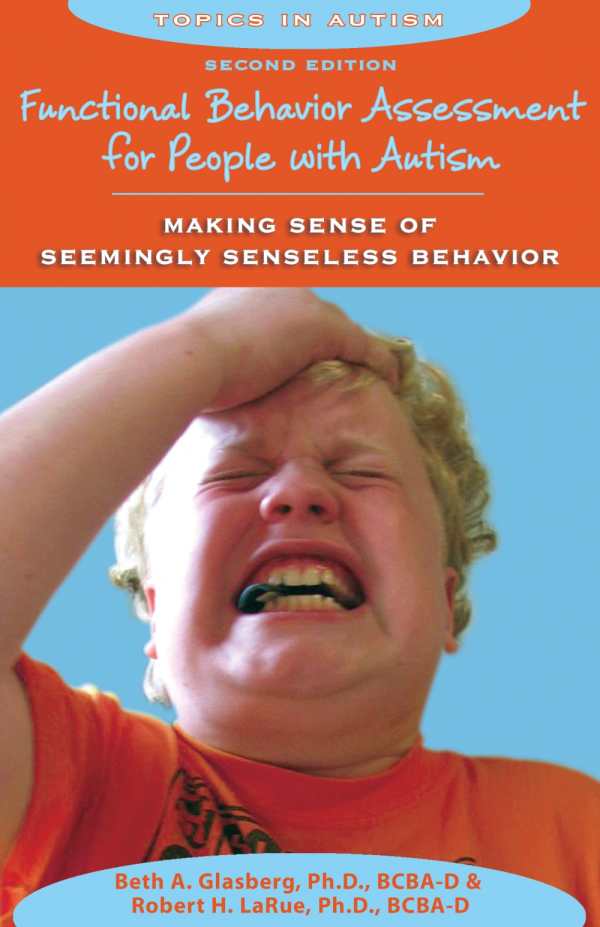
Functional Behavior Assessment for People with Autism
Making Sense of Seemingly Senseless Behavior
This comforting guide is a calm, logical how-to on understanding and dealing with autistic behavior.
Children who fall within the autism spectrum can exhibit behavior that’s baffling, frustrating, even maddening to those who care most about them. Behaviors ranging from rocking back and forth to hitting and biting others seem random—even deliberately belligerent—to parents, teachers, and peers. Fortunately, it is possible to dispassionately evaluate these behaviors and devise a scientific way of lessening their occurrence. Beth A. Glasberg and Robert H. LaRue’s Fuctional Behavior Assessment for People with Autism is a straightforward, useful guide for parents and educators on how to calmly and logically deal with the emotionally draining episodes that can plague autistic children.
First, throw out everything you think you know about what motivates children to change. Odds are, you’re already doing it wrong. A simple thing like that old parental standby—the time-out—could only be encouraging your autistic child to engage in destructive behavior. If there is any one thing that all children on the spectrum have in common, it’s an uneasiness in social situations. If hitting, head-banging, being destructive brings on a time-out (an adult removing them from social interaction), then autistic kids learn that this behavior is rewarded.
Most important is to find what is truly motivating an autistic child to act a certain way, keeping in mind that they may lack the social skills to communicate in a nondestructive way. The book outlines specific ways of determining the child’s motivations and internal reward system. Then the authors give examples of how this internal reward system can be altered to lessen the behavior. Sidebars throughout give quick tips on how to keep it simple, and “practice examples” give real-world strategies for dealing with autistic behavior.
This book is set up for a group effort—parents and educators alike. But, for anybody who deals with autistic children, there’s something comforting about a book like this, of step-by-step explanations and answers for parents at their wit’s end. The calm, scientific, yet easy-to-understand tone creates a feeling that the answers can be found within. And it all makes logical sense.
Reviewed by
Howard Lovy
Disclosure: This article is not an endorsement, but a review. The publisher of this book provided free copies of the book to have their book reviewed by a professional reviewer. No fee was paid by the publisher for this review. Foreword Reviews only recommends books that we love. Foreword Magazine, Inc. is disclosing this in accordance with the Federal Trade Commission’s 16 CFR, Part 255.
